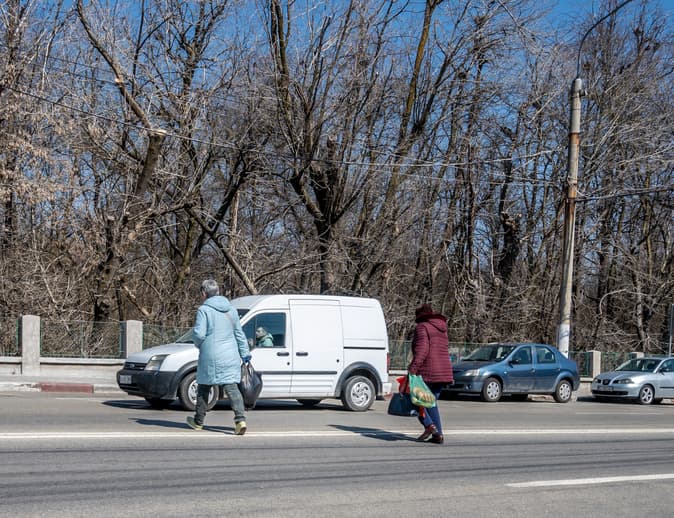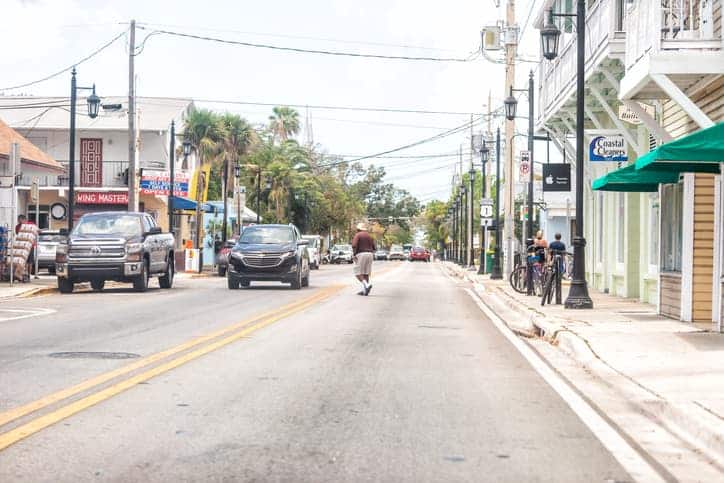What Is Jaywalking?
Laws have multiple purposes, including promoting public safety. States began passing traffic laws in 1901 to regulate traffic. The first laws limited driving speeds, which can prevent accidents and save lives. Lawmakers soon realized they needed to govern pedestrians and drivers, prompting the first pedestrian crossings in the U.S. in 1911. Kansas City passed the first jaywalking law in 1912.
What is jaywalking?

Before the introduction of motor vehicles, people legally walked across roads at any location. Once motor vehicles rose in popularity and use, communities introduced pedestrian crossings. These crossings include crosswalks and intersections with active walk signs, which are lawful places for pedestrians to cross the street. These crossings are points where, under appropriate conditions, it’s legal for pedestrians to cross the street.
Jaywalking refers to pedestrians crossing roads outside of designated pedestrian crossings. It isn’t a legal term but jaywalking encompasses several illegal pedestrian actions. For example, it’s against the law to cross the street when the light’s red. Crossing in the middle of the street is illegal if there’s no crosswalk.
What is the fine for jaywalking?
Each state maintains pedestrian laws, and penalties for violators vary based on the nature of the infraction and the location. While the State of Florida fines pedestrians $15 for illegally walking across the street, pedestrians in New York may face fines of $150 for failing to use a pedestrian crosswalk when crossing the street. Persons charged with illegally crossing the road in California may receive fines of $200.
Why is jaywalking dangerous?
Each year, accidents claim thousands of pedestrians’ lives. Jaywalking isn’t a harmless crime because it can cause significant injuries or death. Drivers who strike a pedestrian may also sustain physical and mental injuries, such as whiplash and post-traumatic stress disorder (PTSD).
Reasons jaywalking is dangerous:
- Limited driver visibility
- Insufficient markings
- Large motor vehicles inflict significant harm
- Financial impact
Jaywalking affects public services when it results in an accident. Accident investigations consume dozens to thousands of staff hours, depending on the accident’s severity. Jaywalking can also cause financial harm. Any person involved in a pedestrian accident may need long-term medical care, depending on the severity of their injuries. Drivers, passengers, and pedestrians with PTSD may suffer from a loss of income. Individuals injured in car accidents may sue the at-fault party.
Who is at fault in a pedestrian accident?

Since it’s unlawful for pedestrians to cross the street outside of designated pedestrian crossings, pedestrians are at fault when they jaywalk and cause an accident. However, other factors may affect the outcome of an accident investigation, assigning partial blame to other parties.
Vehicle drivers must use due care and attention while operating their vehicles. Drivers may face lawsuits or criminal charges if an accident investigation determines they were negligent and that their negligence contributed to the accident or affected its severity. Suppose the accident investigation concludes that a driver involved in a pedestrian accident was speeding, intoxicated, or texting when the accident occurred. Pedestrians can sue for medical expenses, wrongful death, and pain and suffering. Police might issue a fine if the driver was speeding or file criminal charges for driving under the influence. Negligent drivers may face fines or court proceedings.
NO FEES UNLESS WE WIN
Protecting Your Rights Since 1983
Have you been involved in a pedestrian accident? Learn more about your legal rights with a FREE consultation today.
Hablamos Español
What to Do After Being Involved in a Pedestrian Accident
Pedestrians and drivers must comply with local accident laws. Each state sets a minimum damage threshold for reporting accidents to the police. Since it may be unclear if damages from the accident exceed $500 or if intoxication was a factor, it’s a good idea to contact the authorities. Accident victims may be unable to perform some or all of these tasks if they’ve sustained severe injuries. Those in minor accidents with minimal damage and no physical injuries may be required to file an accident report if the police don’t attend the scene.
NO FEES UNLESS WE WIN
Protecting Your Rights Since 1983
Were you injured in a pedestrian accident? Learn more about your legal rights with a FREE consultation today.
Hablamos Español
Moving a vehicle off the road while waiting for the police is appropriate in some situations. Drivers and pedestrians may be at risk if they stay on a road with high speed limits and traffic volumes. They may also be at risk if limited visibility reduces drivers’ response times when approaching the scene. When in doubt, consult an attorney before supplying information or giving a statement. Personal injury lawyers protect the rights of persons involved in pedestrian legal counsel.
What to do if you’re in a pedestrian accident:
- Move to a safe location if necessary
- Seek medical assistance
- Call the police
- Get insurance and contact information
- Secure evidence
- Contact a personal injury attorney
- Contact your insurance company
- Get a copy of the accident report
What not to do if you’re in a pedestrian accident:
- Admit fault
- Forfeit your legal rights
- Leave
- Talk to other parties’ insurance companies
- Agree to a settlement without legal counsel
Sources
Connecticut enacts first speed-limit law. 2009.
McCarthy, N. (2020). U.S. Pedestrian Deaths Hit Highest Level In 30 Years.
Report a Crash. (2014).
About the Author

Jack G. Bernstein, ESQ.
Jack Bernstein is a hard-working and highly motivated personal injury attorney in Miami, Florida with over three decades of experience. He is a strategist and idea person, with a genuine passion for helping his firm’s clients. If you’ve been injured, contact Jack Bernstein today for a free evaluation of your case.
